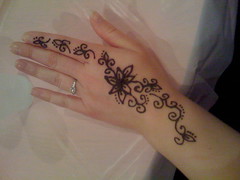 |
| Community Liaison Office trip to Taiz |
Then, midway through my year of Arabic training, Alex left Abu Dhabi and returned to the United States. Our belief that he would be able to work in the U.A.E. until he retired proved unrealistic. He would not be returning to Abu Dhabi. Instead, he was hired by Bechtel and sent to San Antonio, Texas. And that meant my reason for accepting the assignment to Yemen disappeared. I explored the possibility of breaking my assignment and remaining in Washington, but in the end I offered a compromise of spending one year in Yemen instead of two during which time the Department would be able to line up a successor. Reluctantly, I packed up what I needed and set off for Sanaa.
My first five weeks in Yemen involved more opportunities to experience the culture and meet people of the country than in the five years I spent in Qatar and the United Arab Emirates combined.
I arrived in Yemen on a Wednesday evening in early August and began my adventure the next day as I joined my sponsor, Cynthia, and many others from the embassy on a weekend trip to Taiz and other places of interest in the south central part of Yemen. We went by car caravan with a guide and drivers from a local tour organizer..
As we left Sanaa, I heard sirens and wondered what was going on. It took a few minutes to discover the sirens were on the police escort vehicles at the head and tail of our caravan. What a shock to realize that WE were the important people being escorted through town. During that trip I learned about the predilection of children in Yemen to ask for pens. "Qalum, qalum," I heard them all say whenever we stopped.
The following weekend Cynthia and I went to an engagement party at the home of the fiancee of one of the employees of the consular section. Cynthia wasn't entirely certain which house was the right one, but when we knocked on the door, we were welcomed in. Still Cynthia wasn't sure it was the right house, but the hospitality was typical of what she had seen eveywhere in Yemen.
She did get it right. All the guests were women, of course, but the prospective groom was expected. When he arrived, all the women except the groom's sisters covered themselves with their abbayas. When he left, the party ended.
 |
| Women's events are impossible to photograph. This image is as close as I could find to something representing an Arab wedding reception  by Fuschia Foot by Fuschia Foot |
In contrast to the weddings I attended in Qatar and the U.A.E., the reception in Yemen reminded me of receptions I recalled from my childhood where the church ladies prepared the food to be served from behind the counter that separated the church kitchen from fellowship hall and all the tables and chairs. The Yemeni equivalent of church ladies were putting together boxes of food that were handed out at the end of the event. Serving food marks the end of all events in the Arabic side of the Gulf that has two names.
The following week, Cynthia and I were invited to have lunch at the home of another employee of the consular section. Mohammed* and his family lived in the Old City, that section of Sanaa where the buildings were centuries old, designated as a UNESCO Heritage site. It is the section of the city of the souq, the traditional shopping area. The streets in the Old City are laborynthine, even maze-like. I couldn't have found the same house again.
 |
| Museum scene showing typical Yemeni living room |
Living in Yemen is like living in a museum. A UNESCO Heritage site is a living museum, but the rest of Yemen also resembles a museum with views of people and activities that could have been from centuries going back as far as the birth of Christ around every corner.
Also during my first five weeks, those of us who had recently arrived in Yemen were invited to lunch at the home of one of the close advisers to the Foreign Minister. In all the other countries I had lived, I had been invited to evening receptions and formal dinners with members of the local government. But only in Yemen was I invited as a special guest.
Yemen was turning out to be quite unlike I had expected.
Also during my first five weeks, those of us who had recently arrived in Yemen were invited to lunch at the home of one of the close advisers to the Foreign Minister. In all the other countries I had lived, I had been invited to evening receptions and formal dinners with members of the local government. But only in Yemen was I invited as a special guest.
Yemen was turning out to be quite unlike I had expected.
*a name, not necessarily the right one
No comments:
Post a Comment